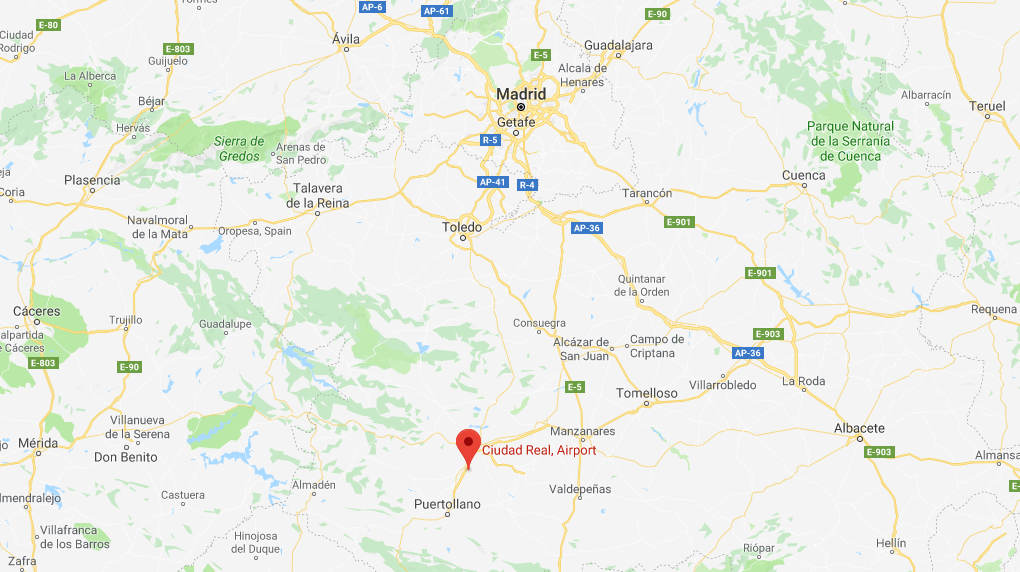Ciudad Real has become infamous throughout the world. Located over 180 km south of Madrid in the middle of nowhere it was conceived as a low-cost facility for the Spanish capital during a period of very rapid growth for the low-cost genre, when space was at a premium at Madrid's Barajas airport and when the costs of operating there was high for LCCs. During a construction lull brought about by environmental demands, Madrid's hub solved its capacity problem by opening its huge fourth terminal, thus releasing cheaper space in other terminals for the likes of Ryanair, easyJet and Spanish budget airlines. Ciudad Real's raison d'être disappeared accordingly.
CHART - Madrid Barajas' airport charges for larger aircraft operations are still high when compared to most other European hub airports Source: CAPA - Centre for Aviation and Air Transport Research Society
Source: CAPA - Centre for Aviation and Air Transport Research Society
While initial airline take-up at Ciudad Real was quite positive (including airberlin, which fed traffic through its Palma de Mallorca hub) passenger numbers were insufficient to sustain most services. Then the owners, an assortment of public and private enterprises, tried to attract cargo flights through a distribution hub which is actually quite well situated geographically, at a north-south, east-west crossroads. But that didn't work either.
Eventually the airport was mothballed and was when it was perhaps in highest demand following a legal battle as to its ownership involving Spanish, European and Chinese companies, all of which had different motives for wanting it.
Interestingly, the reasons being given as to why the airport should succeed now are just the same as they were originally and are infrastructure based. Namely that it is the only airport in Spain that has the capacity to host international flights, has a high-speed direct rail connection (with a station right at the airport) and has an immediate connection to the motorway network (notably the north-south E5; the proposed Valencia - Lisbon highway has not materialised as both Spanish and EU funds dried up).
Other airports come close, mainly Barajas, but without quite satisfying all those criteria. But of course these aren't necessarily the criteria for success. The main one remains location.
MAP - MAP - Ciudad Real Central airport, previously known as Don Quijote airport and South Madrid airport, is located city in Castile-La Mancha, over 180 km south of Madrid Source: Google Maps
Source: Google Maps
The owner now is Ciudad Real International Airport SL (CRIA), and it acquired the airport asset for EUR56.2 million in Sep-2018. At that time, they announced that their intention was to put the airport into operation in 1Q2019, which they did not achieve. They also said (and this conflicts somewhat with the passenger infrastructure claims) that CRIA would have an "industrial" use, devoting most of its activity to aircraft maintenance and freight transport with cargo forecasts of between 1,500 and 2,000 tons per week.
The management may have seen how Teruel airport, between Valencia and Zaragoza, has reinvented itself in a similar fashion, specialising in storage and MRO and with no passenger services, and featured in a previous The Blue Swan Daily report.
https://corporatetravelcommunity.com/teruel-airport-a-magnificent-reality-rather-than-a-moribund-aeromuerto/
At the same time they left the door open to general aviation activities and did not rule out operating bases for low-cost airlines, including those on transoceanic flights. Since the original opening, and closure, low-cost long haul has grown considerably, but is perhaps at a crossroads of its own right now.
There continue to be setbacks. An unnamed British fund had been expected to invest EUR500 million in the venture but that didn't materialise. Neither did an agreement with a Portuguese company to build a hangar.
However, one with the US company Skydweller Aero did, with an initial investment of EUR5 million. It should rise to EUR40 million, with the aim of creating 100 jobs. Skydweller manufactures aircraft with a high technological component. The first phase of its multinational project will focus on the integration of cutting-edge technology into aircraft with the intention of starting production in about 18 months.
Little is known of Skydweller. If it can latch on to electric technology and make such aircraft viable economically it could transform Ciudad Real. On the other hand it is a start-up. It could equally suffer the Ciudad Real curse.
https://corporatetravelcommunity.com/theres-another-proposal-for-a-second-madrid-airport-but-whats-so-different-this-time-quite-a-lot-it-appears/
So, 12-Sep-2019 sees Ciudad Real airport being offered its second chance. In five and 10 years time will it be celebrating an anniversary or looking back sadly on another missed opportunity? It would seem that this is at least potentially a more fruitful direction to take, but there still remains a scheme to convert an airfield 30km southwest of Madrid into an alternative passenger airport for the city, as highlighted in the above The Blue Swan Daily report. While there are doubts over adding one new commercial airport, there certainly wouldn't be room for two.